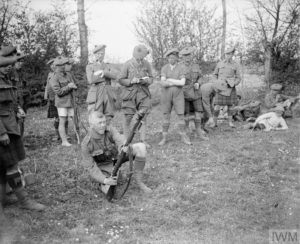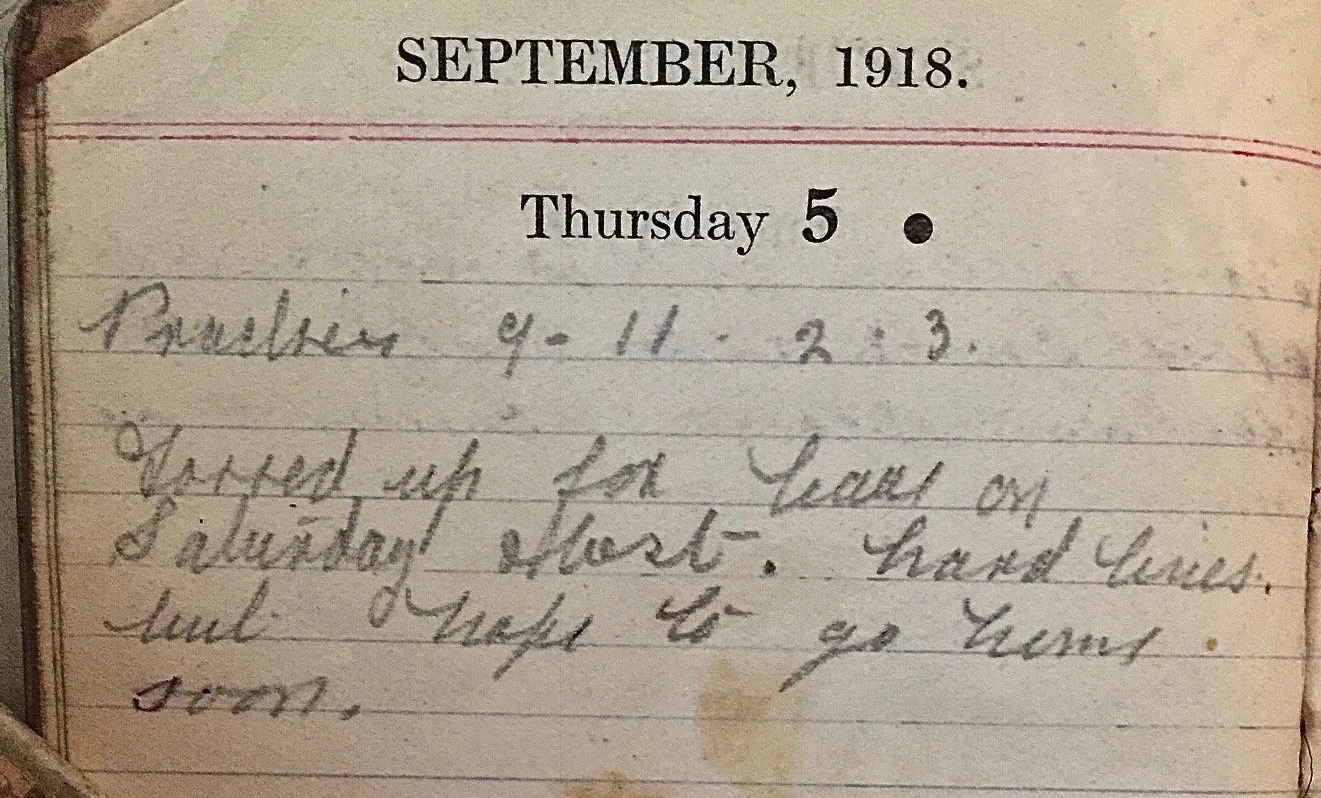Thursday September 5th, 1918
Practice 9am till 11am and 2pm till 3pm. Jazzed ?? up for leave on Saturday – a bust. Hard lines but hope to go home soon.
Rifle Grenadiers

Today the Battalion’s War Diary records new instructions on the strength of the Rifle Bomb section. Depending upon the manpower in the platoon, the section should now comprise anywhere from 6 to 10 rifle grenadiers.
The term ‘grenadier’ is a throw back to the 17th century and refers to those soldiers (usually big and strong) who were singled out to throw grenades at the enemy. In later centuries, the throwing of grenades became less important, but the term continued to be used for elite units.
Formed in 1656, the Grenadier Guards, is the most senior infantry regiment in the British Army. However the rifle grenadiers referred to in the BWD today are the seven men of the Rifle Bombing Section in each platoon.
While they may be technically throwing grenades at the enemy, they are using rifles to achieve this. The photograph clearly shows the technique. It was taken at a sports meeting of the 1/7th Battalion Black Watch at Bailleul-aux-Cornailles in May 1917.
The Rifle Grenade
In 1907 Martin Hale invented a rod grenade that could be thrown. He later adapted it to be launched by a rifle. However slow production during WWI caused the Army to also use an adapted Mills Bomb as a rifle grenade. Unfortunately launching either make caused the rifle muzzle to buckle and become useless as a standard fire arm.
Consequently a cup-launcher was developed to overcome such problems. This became standard in the later years of the war.
‘In this design, a can-shaped launcher was attached to the muzzle of the rifle and a gas check disc was screwed onto the base of the grenade before the grenade was placed in the launcher. The safety pin could then be removed as the launcher cup kept the safety-spoon in place. The operator inserted the blank cartridge into the rifle before setting the stock, angled on the ground to absorb the recoil of the weapon. When the cartridge was fired it pushed the grenade out of the cup releasing the spoon. The cup-type launcher could launch the grenade about 200 yards. Lee–Enfield rifles equipped with the cup launcher were modified with copper wire wrapped around the stock, to prevent the wood from cracking under the increased recoil.‘²
9th Battalion War Diary – 5th September 1918 – Haudricourt
Training as per programme. The number of rifle grenadiers in a platoon will vary according to the strength of the platoon. With minimum strength, 6 & with maximum strength 10.
References & Further Reading
¹ Grenadier on Wikipedia
² Mills Bomb on Wikipedia
* Q 5355, copyright Imperial War Museums



The entry reads „tossed up ( flipping a coin) for leave on Saturday & lost“ I am sure I would have said something else other than “hard lines“ 😀
Charlie
That’s the Sally Army for you!